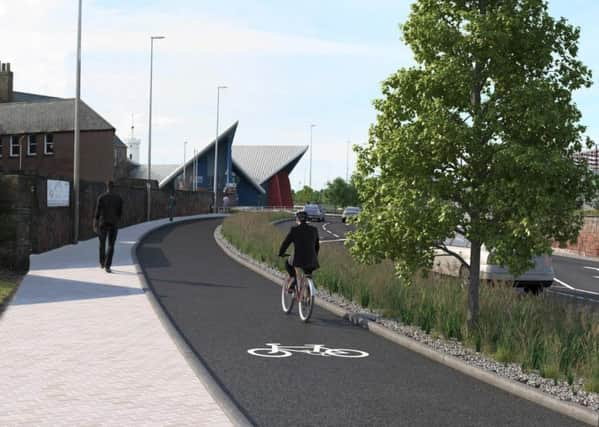Scottish ministers’ new transport priorities put lone drivers at the bottom


Scotland’s latest transport blueprint was not launched with vague notions but a very clear signal about the direction of travel. What must be one of the biggest single cycling and walking announcements to date accompanied the publication of the new National Transport Strategy last week.
A total of £60 million will be spent on what will effectively be the transfer of road space from motor vehicles to cyclists and walkers.
Advertisement
Hide AdAdvertisement
Hide AdIt’s the latest of a series of moves that appears to show that ministers are serious about getting more people onto bikes and stretching their legs.
Five projects to provide segregated lanes for cyclists and pedestrians in Arbroath, Edinburgh, Glasgow and Perth will be funded by narrowing roads, including dual carriageways. It comes two years after a contest for similar schemes saw all five shortlisted projects being approved. Only one winner had been expected, in line with previous rounds.
In what may infuriate those wedded to their cars, the Scottish Government’s new strategy also includes an inverted pyramid to illustrate its “sustainable travel hierarchy” – showing where the priorities now lie.
This has walking and “wheeling” – wheelchairs – at the top, with cycling beneath, then public transport such as buses and trains, followed by taxis and ‘shared transport’ like minibuses, and cars at the bottom.
The document makes it quite clear who will come first: “We will embed the hierarchy in decision making so that walking, cycling and public and shared transport are promoted and take precedence ahead of private car use.”
It’s already been demonstrated that effective reallocation of road space is achievable, it just needs political will.
In Glasgow, roads in the city centre like Sauchiehall Street are being narrowed and parking removed to provide cycle lanes and wider pavements. Edinburgh has similar plans.
Advertisement
Hide AdAdvertisement
Hide AdBut smaller schemes also show the disparity between road and pavement widths.
In the west end of Glasgow, the creation of parking bays for a new permit scheme has finally led to a potholed cycle lane on the side of the road being replaced with smoother new lanes between the parking spaces and carriageway, showing there is space for all.
While not ideal, it is a big improvement since cyclists were previously forced out of the old bike lanes because they were peppered with holes or blocked by parked cars.
With its strategy, the Scottish Government has put down a renewed marker to councils, who are responsible for most such cycling/walking schemes, some of whom have torn up or shelved them.
That’s important when the strategy highlights we’re heading in the wrong direction, with Scots becoming increasingly reliant on their cars, which they use for an astonishing one in three journeys of less than 1km (0.6 miles).
By contrast, the total distance cycled fell by 6.5 per cent between 2012 and 2017.
Improving such infrastructure is seen as key to make people feel safer cycling. Travelling by bike can be fun and gives you a real sense of being in control of your travel. It’s the least likely to be held up by the congestion and disruption which can plague other transport, especially if you choose off-road or quieter routes.
That’s the policy set then – and the vociferous cycling lobby will doubtless keep up the pressure to ensure ministers follow through.